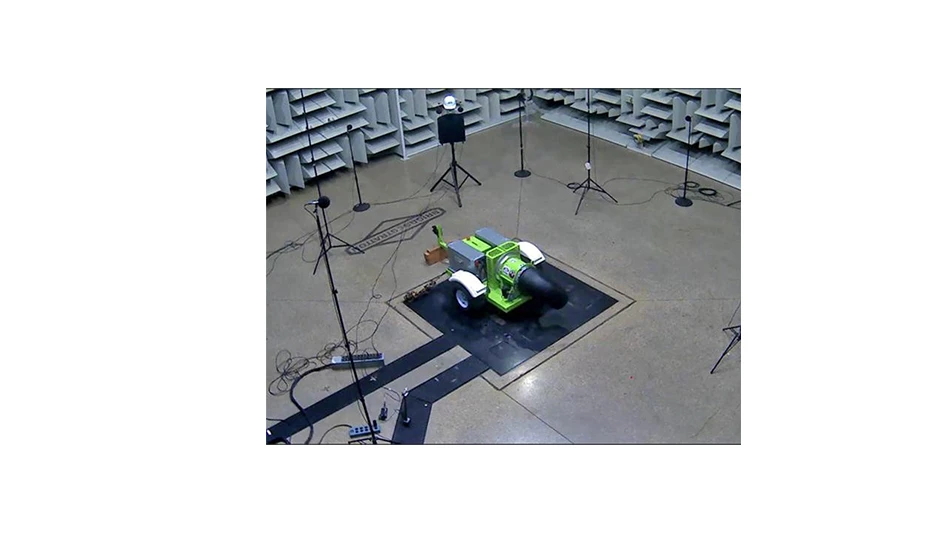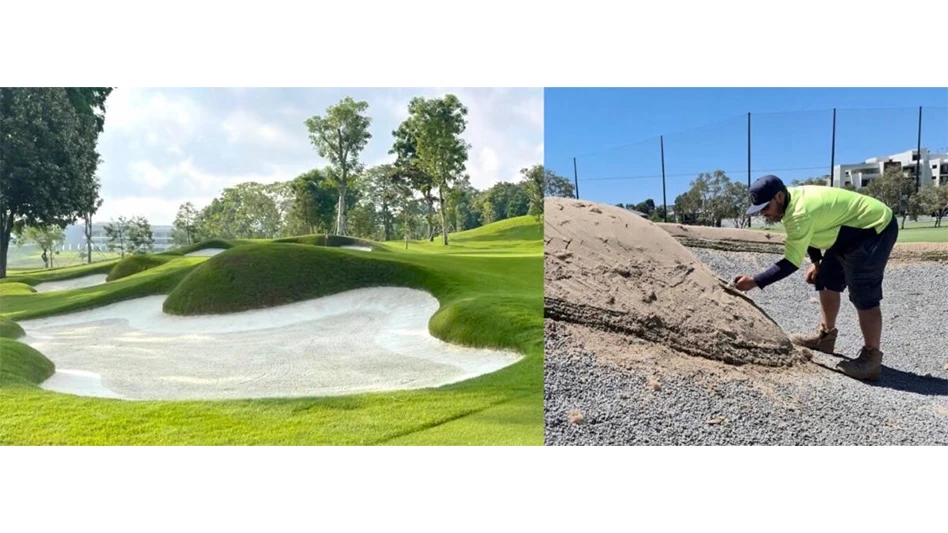
Keeping up with the times and remaining competitive are good reasons to renovate your golf course. For us, with an almost-60-year-old Ocean Course designed in 1962 by architect Bill Mitchell and a sister Dunes Course that had slight improvements 20 years ago, it was clear we should set our sights on a master plan and a multi-year, multimillion-dollar 36-hole golf course renovation.
As we start the 2020 season with our monumental project just completed, I’d like to insert a sigh of relief here, but it is hardly time to sit back and relax because our work is never done. I will take a little time, though, to reflect and share the complexities and benefits associated with the planning, permitting and construction of our restoration. If you’re considering a bunker project, looking to make refinements to improve playability or facilitate a major overhaul to your course, a well-conceived master plan can create a sustaining interest in your facility for years to come. It can also increase revenue and profits, lower operational costs, and contribute to a greener footprint.

As golf course superintendents, we constantly strive to improve our courses and enhance the golf experience. Entering my 29th season at the Club at New Seabury, my familiarity with every contour of our courses and my understanding of the seasonal elements and challenges (read: beach erosion) of our Cape Cod property have helped in how we approached our renovation. Having an esteemed architect in Bruce Hepner of Hepner Golf Design guide us in collaboration with Agriscapes Golf Course Construction was a bonus.
Understanding your members and the general clientele of your golfers coupled with knowing most every detail of your course is also important. And having knowledge of the other nearby properties can serve as a guidepost and a benchmark to identify, compare and differentiate where your course is at and what you’re looking to achieve.
Through the years, I’ve had a great staff to lean on and I’ve also worked with local and industry experts who collectively have supported and guided me through varied challenges and achievements. Here are a few tips to consider as you plan your renovation:
1. Develop the plan
Identify your greatest assets and enhance them where you can.
The first step of any renovation or course improvement project, large or small, is to define what your goal is. What do you want to accomplish? It helps to analyze your existing course as well as to study what to improve and why — and, of course, to build on your course’s greatest assets and determine what you want your result to be. Is your goal to improve aesthetics, make the course more challenging or create a more playable track regardless of the golfers’ skill set? Do you want to offer different shot choices or add shot value? Perhaps it’s all of these.
We had an experienced golf course architect in Hepner, who has designed and enhanced some of the more storied golf courses in the game. He listened to our concerns, identified the required areas of improvement and offered solutions. He also helped us begin the process by preparing a master plan that crystalized everything.
With 36 holes, we had two distinct golf courses, so our maintenance plan and our design plan were based on the land and layout. With our small, executive inland course, everything was softer and greener for people to enjoy. They could reach the green in two by playing the right tees, hitting their ball on the green and having it stay on the green. We redesigned this course for the average golfer looking to have a good time. To complement that with our Ocean Course, designed more for the avid, low-handicap golfer, we wanted to accentuate the natural ocean views, enhance the ambiance, playability and maintainability of the course. There’s a reason people go to Pebble Beach, right? So, we developed a plan to accomplish aesthetic enhancements, new drainage, design variety and a full bunker renovation.
2. Adapt to changing times and provide a challenge and reward for all
Many circumstances may influence your plan and the need for your club or facility to renovate or remodel. Our courses were outdated and yours may be, too. With a massive leap forward in golf technology, the game has been transformed and course layouts have changed forever. We’ve seen golf balls evolve from wound to multi-layered to solid core; drivers are now oversized and speed injected; and golfers are more athletic and fit and have increased their club speed to bomb it off the tee. So, is it all about length then? By moving bunkers, widening landing areas and repositioning tees, we created challenges and rewards for golfers of all skillsets. You don’ want your avid players challenged too much or your high-handicap golfers in trouble every time they hit the ball. We created a proper zone for golfers. The Ocean Course’s 7,100 yards — generally plenty of distance for 99 percent of golfers — had bunkers and landing areas set up from back in the 1960s, when it was built and most golfers were using persimmon woods. Jack Nicklaus was probably hitting 260 with a driver, so we repositioned the landing areas and bunkers to meet the 21st century.
3. Green renovation and the right maintenance
When mapping out your renovation, you should ultimately improve your maintenance plan and thus reduce your watering, fertilizer and chemical usage. We created native areas that included natural, tall fescue grasses and little bluestem. We also added wildflowers in some areas. We went from no natural areas to close to six acres of native areas on the Ocean Course. It helped define and bring a distinct look to the course, and it now resembles a links-style course with the ocean similar to Shinnecock Hills and National Golf Links of America. We enhanced the aesthetics from tee to green but kept the playability at a fair level.
As for investing in the right equipment, it was paramount for us and there are some great options today from aeration and specialty equipment to sprayers and GPS systems. I’ve seen firsthand how these advanced sprayers improve accuracy within an inch, which saves money and time when caring for your course. If you can design a five- to 10-year maintenance plan that coincides with your renovations, you will enhance the longevity of your investment. There’s no sense in a multimillion-dollar renovation project if you can’t invest in the equipment and maintenance strategy to support it.
4. Three stages to the project: Pre-planning
It’s never too early to start. The first day we were serious about considering a renovation, the general manager asked me if I was going to the national conference. He recommended I talk with builders and architects because we had money to do some bunkers and other work. It took two years before we got things improved internally. There were discussions, negotiations and annual budget reviews. It took two years to get to the starting line.
Planning
There are a host of logistics and timelines when taking on a renovation. I recommend you have someone on staff who can run your crew because you’re going to be pulled in multiple directions. Even though there’s a renovation, you’re still doing day-to-day work on your course. I can’t stress how much preparation is involved and how many extra hands are needed.
The renovation
Once the builder and architect turn the area over to you for maintenance and they lay sod on the ground, it’s now your responsibility to keep it alive and thriving. This brings you back to maintenance. You’re now coordinating different crews. These all need to be part of the master blueprint.
5. What-ifs? Storms and pandemics will happen
I’d like to pat my peers on the back and say with humility that superintendents are probably the most adaptable professionals in the golf industry. There are always challenges. It’s easier and more manageable if you plan for the worst-case scenario and prepare for it knowing it might happen than not being prepared and having it happen. We started in September and planned to shut down after Labor Day and then open on Memorial Day. Our unpredictable Cape Cod weather froze us out with snow in December and when we planned to come back with the finishing touches in March, we were greeted with the most unpredictable storm in our lifetime — a pandemic. No one could have prepared for what we are now facing with COVID-19. It forced us to sideline our workers. In some cases, we couldn’t bring our employees back as we have laborers out of the country. There was a lot of work to be done with some unexpected snags – some larger than others. But we figured it out and got it done.

Explore the July 2020 Issue
Check out more from this issue and find your next story to read.
Latest from Golf Course Industry
- Bloom Golf Partners adds HR expert
- Seeking sustainability in Vietnam
- Kerns featured in Envu root diseases webinar
- Toro continues support of National Mayor’s Challenge for Water Conservation
- A different kind of long distance
- Golf Construction Conversations: Stephen Hope
- EnP welcomes new sales manager
- DLF opening centers in Oregon, Ontario






